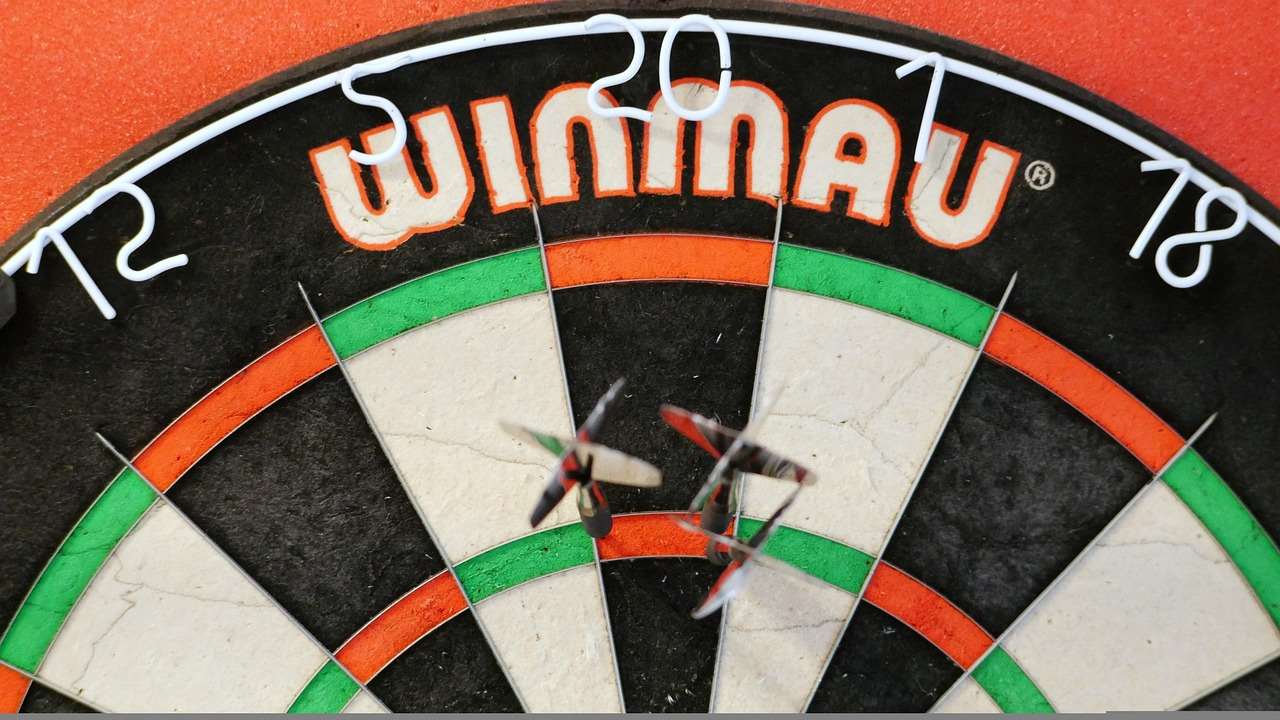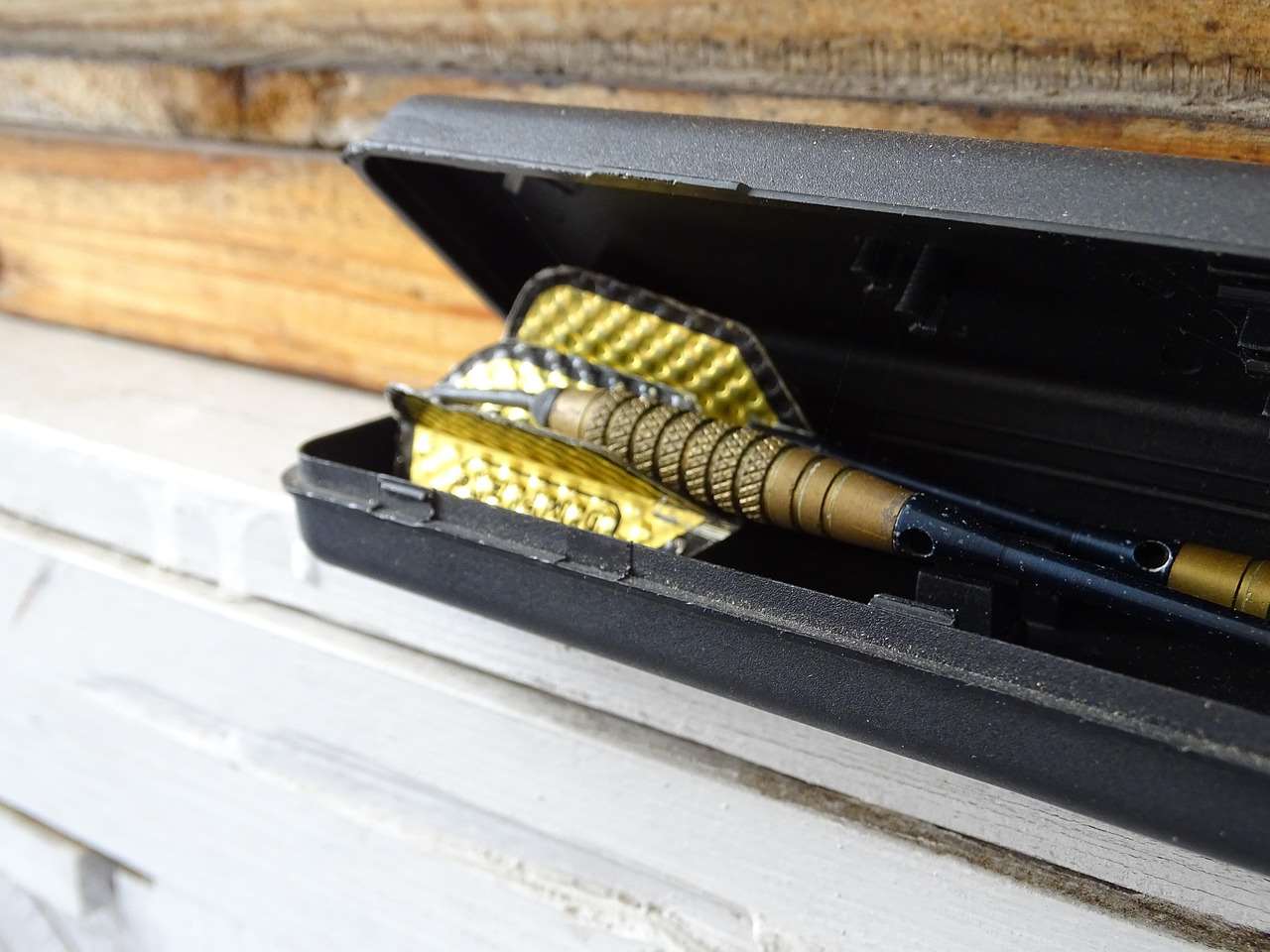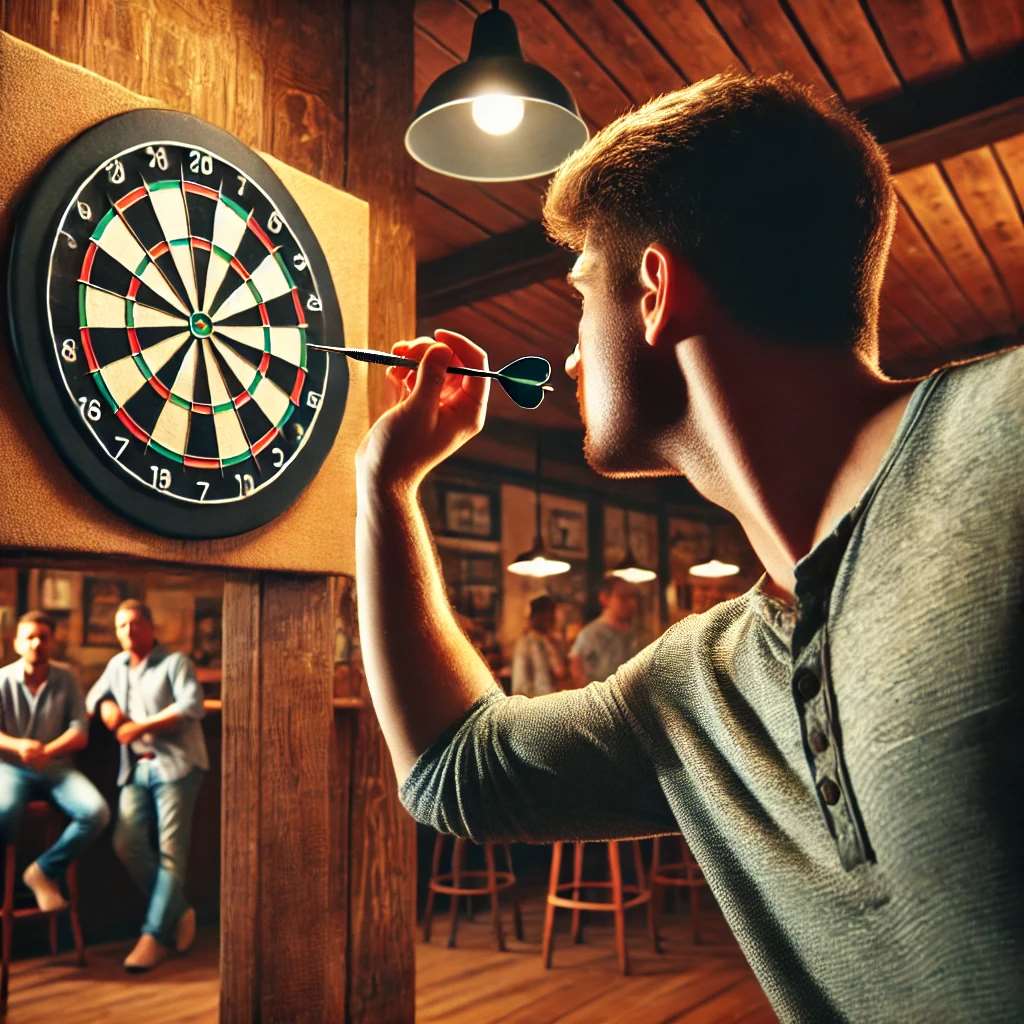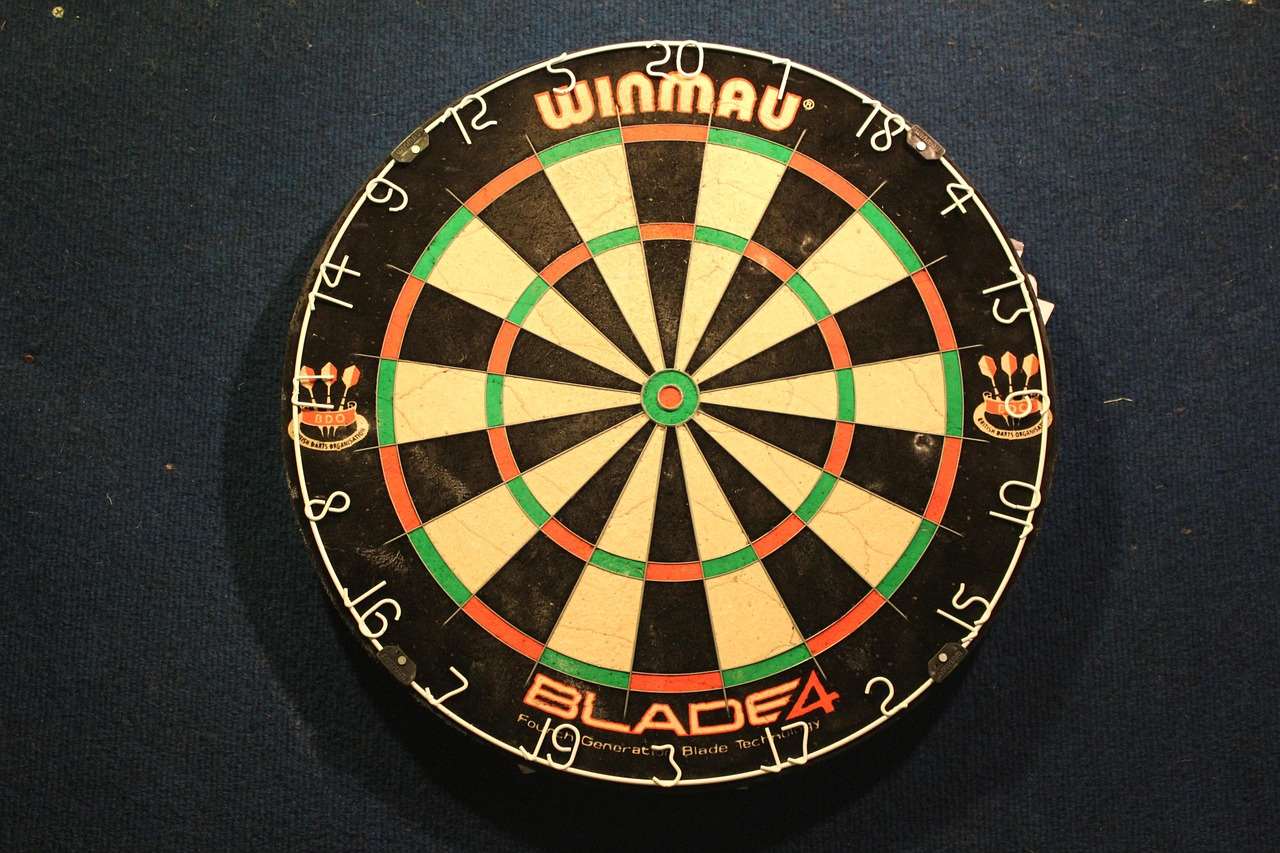Mastering precision darts and sports comes down to a blend of technique, equipment, and mental fortitude; this article provides insights into honing your dart-throwing skills, selecting the right gear, and understanding the nuances of this captivating sport. We’ll delve into the fundamentals of dart throwing, explore different types of darts and equipment, and discuss strategies for improving your game.
⚠️ Still Using Pen & Paper (or a Chalkboard)?! ⚠️
Step into the future! The Dart Counter App handles all the scoring, suggests checkouts, and tracks your stats automatically. It's easier than you think!
Try the Smart Dart Counter App FREE!Ready for an upgrade? Click above!
The Fundamentals of Precision Darts and Sports
At its core, precision darts and sports relies on consistent execution of fundamental movements. Before even considering specialized equipment or advanced techniques, understanding these basics is crucial. The stance, grip, and throw are the three pillars of a solid dart game.
Stance and Posture
Your stance provides the foundation for your throw. Most players adopt a sideways stance, positioning their dominant foot towards the oche (the throwing line). Experiment to find a stance that feels natural and balanced. The weight distribution should be even, allowing for a smooth transfer of energy during the throw. Maintain good posture – avoid slouching or leaning too far forward. Keep your head still and focused on the target.

Grip Techniques
The grip is your point of contact with the dart, directly influencing its trajectory. There’s no single “correct” grip; it’s about finding what works best for you. Common grips include the two-finger grip, three-finger grip, and four-finger grip. The key is to hold the dart firmly but not too tightly. A tense grip can lead to erratic throws. Experiment with different grip pressures to find the sweet spot. Some players find that using shaft darts improves their grip.
The Throw: Smooth and Consistent
The throw is the culmination of your stance and grip. Aim for a smooth, fluid motion, avoiding jerky movements. The arm should move in a straight line towards the target, with the elbow acting as a hinge. Follow through with your throw, extending your arm fully towards the board. Consistency is paramount – strive to replicate the same motion with each throw. Practice drills can help develop muscle memory and improve consistency.
Choosing the Right Darts and Equipment
Selecting the appropriate precision darts and sports equipment can significantly impact your performance. Darts come in various weights, materials, and designs. Understanding these factors will help you choose darts that suit your throwing style and preferences.
Dart Weight: Finding Your Balance
Dart weight is a crucial consideration. Heavier darts tend to be more stable in flight, while lighter darts offer greater control. Most darts range from 20 to 26 grams. Beginners often benefit from starting with a medium-weight dart (around 23 grams) and experimenting from there. Ultimately, the ideal weight depends on your throwing style and the strength of your arm.
Dart Materials: Tungsten vs. Brass
Darts are typically made from either tungsten or brass. Tungsten darts are denser and more durable than brass darts, allowing for slimmer barrels. This means you can group your darts more tightly on the board. Brass darts are more affordable but tend to wear down more quickly. For serious players, tungsten darts are a worthwhile investment.
Flights and Shafts: Fine-Tuning Your Darts
Flights and shafts are essential components that affect the aerodynamics of your darts. Flights provide stability and control, while shafts determine the dart’s overall length and balance. Experiment with different shapes and sizes of flights to find what works best for your throw. Shafts are available in various materials, including nylon and aluminum. Consider purchasing darts accessories to get the most out of your game.

Here are some factors to consider:
- Flight Shape: Standard flights offer the most surface area and stability, while slim flights provide less drag.
- Shaft Length: Shorter shafts can improve grouping, while longer shafts may provide more control.
- Material: Nylon shafts are lightweight and durable, while aluminum shafts are more rigid.
Advanced Techniques for Precision Darts and Sports
Once you’ve mastered the fundamentals and selected the right equipment, you can start exploring advanced techniques to elevate your game. These techniques require dedicated practice and a keen understanding of your own throwing style.
Grouping and Consistency
The ability to consistently group your darts close together is a hallmark of skilled players. This requires precise aiming and consistent execution of your throw. Practice aiming at specific targets on the board, focusing on replicating the same motion with each throw. Visualize the dart’s trajectory and make adjustments as needed. Many players find it helpful to use a Cricket darts scorer app for focused training.
Mental Game: Focus and Visualization
Dart throwing is as much a mental game as it is a physical one. Maintaining focus and managing pressure are crucial for consistent performance. Develop mental strategies to stay calm and composed under pressure. Visualization techniques can help you picture the dart hitting the target before you even throw. Practice mindfulness to stay present in the moment and avoid dwelling on past mistakes.
Target Selection and Strategy
Strategic target selection is essential for scoring effectively. Understanding the point values of different sections of the board and planning your throws accordingly can significantly impact your game. Aim for high-scoring areas like the treble 20, but also be aware of the surrounding doubles for finishing. Develop a strategy for each leg, taking into account your strengths and weaknesses.
Common Mistakes to Avoid in Precision Darts and Sports
Even experienced players can fall prey to common mistakes that hinder their performance. Identifying and correcting these errors is crucial for continuous improvement.
Inconsistent Stance and Grip
A shaky foundation can lead to inconsistent throws. Ensure your stance is stable and balanced, and that you’re using the same grip each time. Avoid making subtle adjustments during your throw, as these can throw off your accuracy. Practice maintaining a consistent routine before each throw.
Jerky Throwing Motion
A jerky or rushed throwing motion can disrupt the dart’s trajectory. Strive for a smooth, fluid motion, allowing your arm to move naturally towards the target. Avoid tensing your muscles or forcing the throw. Focus on maintaining a relaxed and controlled movement.
Neglecting Follow-Through
The follow-through is an essential part of the throw, helping to guide the dart towards the target. Neglecting the follow-through can lead to erratic throws. Extend your arm fully towards the board, maintaining your grip until the dart has left your hand. Practice your follow-through until it becomes second nature.
Practicing and Improving Your Precision Darts and Sports Skills
Structured Practice Sessions
Randomly throwing darts is unlikely to yield significant improvements. Instead, design structured practice sessions focused on specific skills. Dedicate time to practicing your stance, grip, throw, and aiming. Set realistic goals for each session and track your progress. Consider using a darts scorer against computer to monitor your performance and identify areas for improvement.
Drills for Accuracy and Consistency
Specific drills can help you improve your accuracy and consistency. For example, you can practice throwing at the treble 20 repeatedly to improve your grouping. You can also practice finishing on specific doubles to improve your scoring strategy. Incorporate a variety of drills into your practice sessions to keep things challenging and engaging.
Seeking Feedback and Guidance
Seeking feedback from experienced players or coaches can provide valuable insights into your technique. They can identify areas where you can improve and offer guidance on how to correct your mistakes. Consider joining a local darts league or club to connect with other players and learn from their experiences. The world championship darts final time is an excellent opportunity to watch experienced players.

The Social Aspect of Precision Darts and Sports
Beyond the technical aspects, precision darts and sports also offer a rich social experience. Whether you’re playing in a casual game with friends or competing in a formal league, darts provides opportunities to connect with others who share your passion.
Joining a Darts League or Club
Joining a darts league or club is a great way to meet new people, improve your skills, and compete against other players. Leagues and clubs typically offer regular matches, tournaments, and social events. This provides a supportive and encouraging environment for players of all skill levels.
Friendly Competition and Sportsmanship
Dart throwing should always be conducted with good sportsmanship and respect for your opponents. Win or lose, congratulate your opponent on their performance and offer encouragement. Friendly competition can be a great motivator for improvement, but it should never come at the expense of good sportsmanship.
The Community of Precision Darts and Sports Enthusiasts
The darts community is a vibrant and welcoming group of enthusiasts from all walks of life. Sharing your passion for darts with others can enhance your enjoyment of the sport and provide lasting friendships. Whether you’re discussing techniques, sharing tips, or simply enjoying a friendly game, the darts community offers a sense of belonging and camaraderie.

Conclusion: Mastering Precision Darts and Sports
Precision darts and sports is a skill-based activity demanding practice, patience, and the right mindset. By mastering the fundamentals, choosing suitable equipment, avoiding typical pitfalls, and practicing regularly, anyone can enhance their dart-throwing skills. Furthermore, engaging in the social dimension of the sport by joining leagues and fostering healthy competition amplifies the enjoyment and offers more chances to develop. Take what you’ve learned today, apply it to your game, and watch your precision soar!
Ready to take your game to the next level? Find your nearest darts club or league and start your journey towards becoming a precision darts and sports master today!
Hi, I’m Dieter, and I created Dartcounter (Dartcounterapp.com). My motivation wasn’t being a darts expert – quite the opposite! When I first started playing, I loved the game but found keeping accurate scores and tracking stats difficult and distracting.
I figured I couldn’t be the only one struggling with this. So, I decided to build a solution: an easy-to-use application that everyone, no matter their experience level, could use to manage scoring effortlessly.
My goal for Dartcounter was simple: let the app handle the numbers – the scoring, the averages, the stats, even checkout suggestions – so players could focus purely on their throw and enjoying the game. It began as a way to solve my own beginner’s problem, and I’m thrilled it has grown into a helpful tool for the wider darts community.